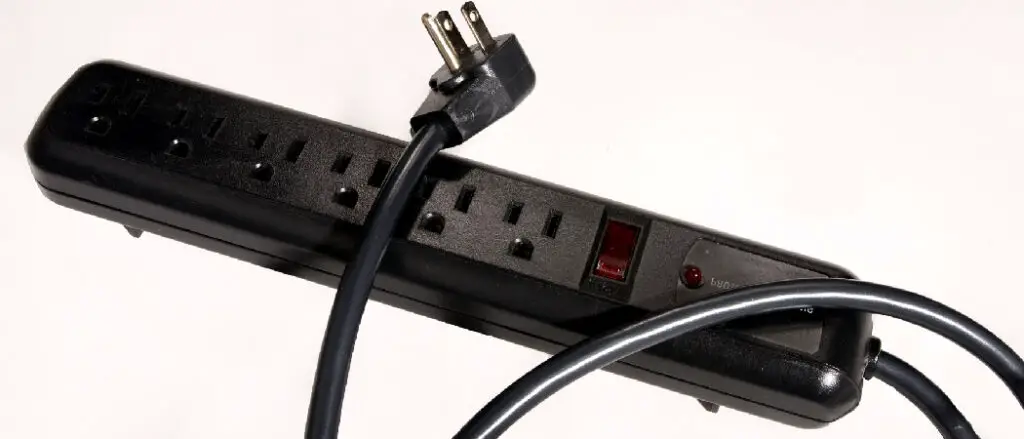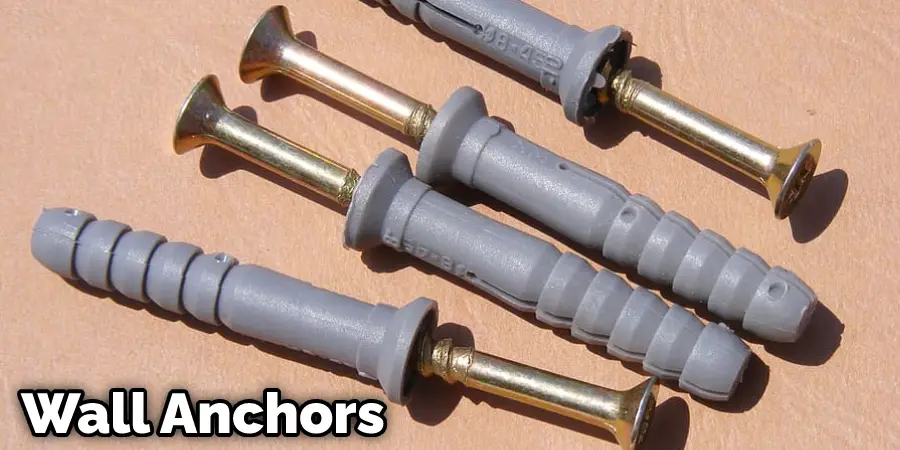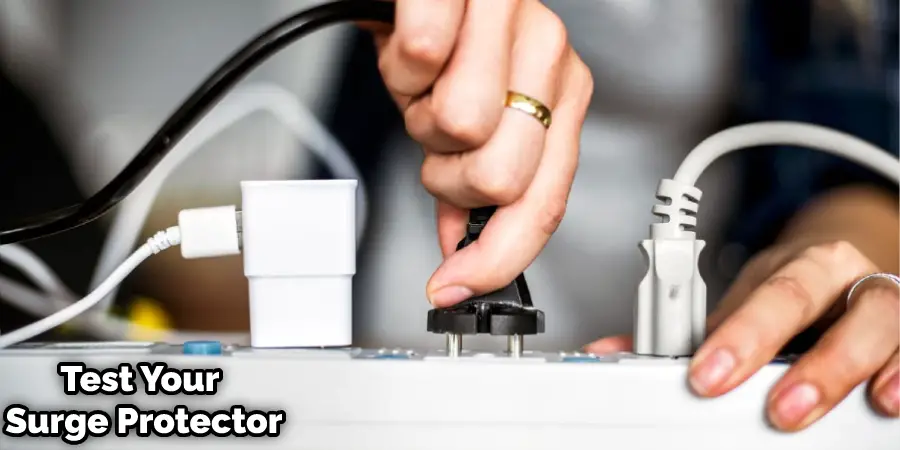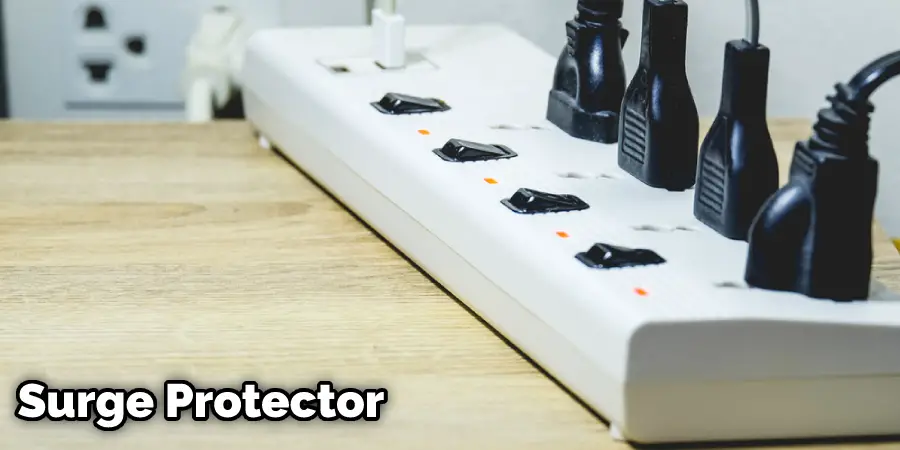Are you looking for how to mount a surge protector, but don’t know where to start? Or maybe you don’t understand the science behind installing it correctly. Either way, mounting a surge protector can be simple and stress-free with the right information.
Mounting your surge protector in the most ideal spot not only helps protect your home against voltage spikes but can also provide an added touch to the decor of any room. Whether you’re a novice DIYer or an experienced electrical contractor, there are some simple steps that anyone can take towards safely and successfully mounting their surge protector.

In this blog post, we’ll break down how to mount surge protector safely and securely so that you can feel confident protecting your electronics from potentially damaging power surges. Read on for step-by-step instructions and helpful advice from our experts!
5 Steps of How to Mount a Surge Protector
1. Gather the Necessary Supplies:
Before you begin, make sure that you have a surge protector and all the proper mounting materials such as screws and wall anchors or a power strip hanger. It’s also important to check the wattage of your device to ensure that you have the right size surge protector for your needs.
2. Select the Ideal Location for Your Surge Protector:
To get the most out of your surge protector, it’s important to find an ideal spot in your room where it can be easily accessed but far enough away from any sources of water or heat. Generally speaking, anywhere on a wall or behind furniture is an acceptable placement area.
3. Install the Wall Anchors:
Using the appropriate wall anchors and screws, carefully install the surge protector on the wall of your choice. Using a drill, create pilot holes in the wall where you want to mount the surge protector. If you’re using a power strip hanger, be sure to follow all instructions included with it for safe installation.

4. Attach Mounting Bracket:
Once you have drilled the holes for the wires, you can now attach the mounting bracket to the wall. Make sure that the bracket is securely attached to the wall so that it does not come loose over time. Additionally, make sure that the bracket is level so that the surge protector will sit evenly on it when mounted.
5. Insert Wires and Mount Surge Protector:
After attaching the mounting bracket, you can now insert the wires into the holes and then mount the surge protector onto the bracket. Make sure that all of the wires are inserted properly and that none are pinched or damaged in any way. Once everything is in place, tighten all of the screws on both the surge protector and the bracket to ensure a secure connection.
6. Test Your Surge Protector Before Use:
Once you’ve securely mounted your surge protector, it’s important to test it before plugging in any electronics or appliances. Simply turn off the power switch and use a voltage tester to ensure that there is no electricity flowing through the outlet before plugging in anything.

7. Plug the Surge Protector Into an Outlet:
Finally, plug the surge protector into an outlet and flip the power switch to “on.” Ensure that all necessary cords and cables are connected to your device, and test it one more time using a voltage tester for good measure.
And that’s it! Now you know how to mount a surge protector in seven easy steps. With these simple instructions, you can be sure that your electronics are safe from harmful voltage spikes or surges, and you can have peace of mind knowing that you mounted it correctly.
Warning Tips While Mounting Surge Protector
- When installing a surge protector, identify the source of power and ensure that it is compatible with the device connected to the surge protector.
- While using electric items such as avoiding contact with live wires and ensuring cords are kept away from kids and pets.
- Never overload a surge protector by connecting too many devices or using equipment with a higher wattage than the surge protector can handle.
- Ensure that all cords and cables are plugged into the surge protector securely.
- Check your surge protector periodically to ensure it is still in proper working condition, and replace any damaged or worn-out components as needed.
- Unplug your surge protector after each use since leaving it plugged in could result in electrical damage due to a power surge.
- Keep your surge protector away from sources of moisture or water to avoid possible shocks or electrical damage.
- If you notice overheating, sparking, or smoke from the surge protector, disconnect it immediately and contact a professional electrician for assistance.
Things Must Need to Check Before Mounting Your Surge Protector
1. Check the Voltage Rating
The first thing you need to do is check the voltage rating of your surge protector. Most surge protectors are rated for 120 volts, which is the standard voltage in the United States. However, some surge protectors are rated for 240 volts, which is the standard voltage in many other countries. You can usually find this information on the label if you’re unsure what voltage your surge protector is rated for.
2. Check the Amperage Rating
The next thing you need to do is check the amperage rating of your surge protector. This is important because it will determine how much electrical current your surge protector can handle. Most surge protectors are rated for 15 amps, which is plenty for most homes and businesses. However, if you have high-powered appliances or electronics, you may need a surge protector with a higher amperage rating.
What You Need to Know Before Buying a Surge Protector
When buying a surge protector, it’s important to ensure it is rated to handle the amount of power you need. Look for an “overload protection” or “high wattage capability” rating. This will help ensure that your electronics stay safe during a power surge. Additionally, consider the number of outlets you need. Many surge protectors come with multiple outlets, so if you have many items to plug in, make sure your protector can accommodate them. Also, Remember to always check the wattage of your device before purchasing a surge protector, and be sure to never overload it with more electronics than it can handle.

Also, consider the features offered. Does it have surge protection indicator lights? Is there a master switch to turn off all connected devices simultaneously? These additional features may be important depending on your needs.
Finally, make sure to check the warranty. Some surge protectors will offer a lifetime warranty, while others may only offer one or two years of coverage. Choosing a product with an appropriate warranty is important in case it fails to protect your electronics from damage due to a power surge.
Frequently Asked Questions
Do All Types of Power Sources Require Different Types of Surge Protectors?
Yes, surge protectors are designed to protect electronic devices from power surges and should be chosen according to the type of power source. For example, a surge protector for an AC outlet must be rated for AC use, while a surge protector for a computer USB port needs to be rated for DC use.
Are There Any Features that May Be Important to Look for In a Surge Protector?
Certainly! The most important features to consider when choosing a surge protector are the number of outlets, power rating, clamping voltage, response time, and surge protection joules. Having enough outlets for your equipment is essential; if you need more than one outlet or multiple devices plugged into the same outlet, make sure the surge protector is powerful enough. The power rating is the total amount of watts your surge protector can handle at once and will vary depending on the model, so check this before making a purchase.
Does the Warranty on My Surge Protector Cover Damages Due to Power Surges?
No, the warranty on a Surge Protector does not cover damages due to power surges. The purpose of a surge protector is to protect your devices from sudden spikes in electrical current, which can damage electronics. However, if a power surge has already damaged your device, then the warranty provided by the manufacturer will likely not cover it.
Conclusion
Mounting a surge protector is important in protecting your electronic devices from power surges. Following the steps outlined above, you can ensure that your home or office will remain safe and secure against any potential damage caused by electrical spikes and other hazards.
Additionally, mounting your surge protectors properly helps keep them organized and out of sight so they won’t detract from the room’s aesthetic appeal. With proper installation, maintenance, and care – you can enjoy peace of mind knowing that all of your valuable electronics are protected with a quality surge protector. Thanks for reading our post about how to mount surge protector.
